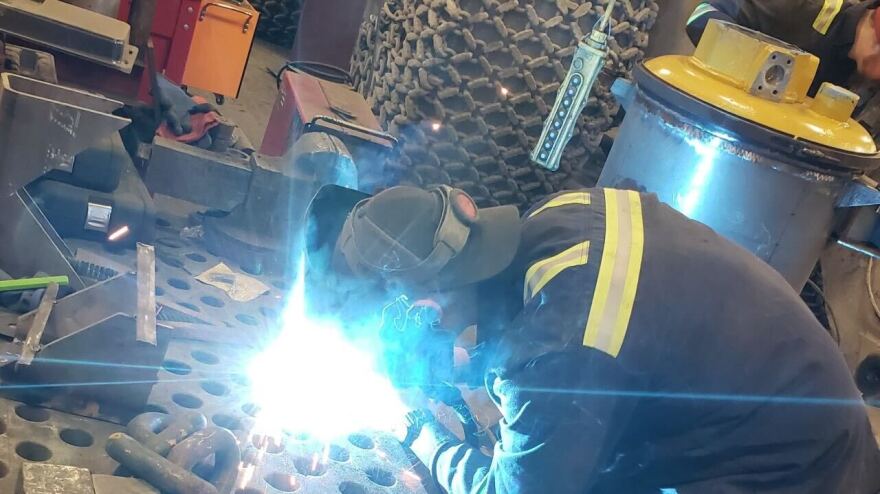Ohio has been struggling to redefine itself economically, as its manufacturing sector continues to shed jobs and its workforce ages. Workers are also paid less than their parents 20 years ago. However, Wayne County's Employment Resource Fund could provide a blueprint for helping people find new careers.
How have changes in the manufacturing sector affected Wayne County in the last two and a half decades?
Wayne County, like a lot of Northeast Ohio, was a big manufacturing hub 25 years ago. For example, Rubbermaid had a manufacturing plant in Wooster up until the company was bought out in 1998.
Today, the county is in a place that's somewhere between hopeful and concerning. Recent research from Policy Matters Ohio shows the county has seen a 15% decrease in manufacturing jobs since 1999. However, the unemployment rate is one of the lowest in the state, so the county isn’t as reliant on manufacturing as it once was. There's actually a growing number of manufacturing businesses in the county — yet fewer jobs overall.
“In 1999, there were 255 manufacturing establishments and, in 2024, there were 339 — so, a lot more manufacturing establishments, however, 2,400 fewer jobs," said Heather Smith, the work and wages researcher at Policy Matters Ohio. "So that suggests that there's a lot more of those small to middle-sized companies that are employing people in the county rather than larger corporations.”
This falls in line with broader statewide trends. A recent report from the Ohio Manufacturers Association shows that the vast majority of the state’s manufacturers employ fewer than 100 people.
How are workers in Wayne County adjusting to the changing landscape?
A few nonprofits in the county noticed a need where many residents were looking to go back to school to either get their GED or get a college degree, but a lot of them couldn’t afford it. The Employment Resource Fund originally began as the HOPE Fund through the Wayne County Schools Career Center in 1987. The fund currently runs under the leadership of the ERF steering committee and the Wayne County Community Foundation.
The fund gives money to nonprofits that in turn help people finance their degrees or GED training or even provide necessary work equipment like work boots or tools.

“We continue to work with nine different initiatives in Wayne County to help students to get jobs, keep jobs, or to get better jobs," said Lee Peart, the steering committee chair of the fund from 2007 to 2025. "This is all geared towards adult training, education, and work.”
After an individual applicant fills out an application, the fund reaches out to providers around Wayne County and gives them the money to buy what they need, as long as it’s employment or education related, up to $500. The only requirement is that people who get help have to either pay back the money or do community service.
The current board chair, Kayley Cox, said the fund is underutilized. But she hopes that changes, because the fund’s role is to help Wayne residents find a job, keep a job, or get a better job.
Can a program like this scale up to cover the entire state?
There are no discussions about the Employment Resource Fund scaling up to the state level. Peart said independence from a state or federal agency is actually a plus.
“It was generated from the community, not from a government institution or anything," Peart said. "We didn't rely on any kind of grants to do this; we were the ones that made the rules to set this thing up.”
Peart says that the lack of government oversight allows the fund to help communities without the agendas of different political administrations.
During the 2024 election, President Trump made restoring U.S. manufacturing a major point of his campaign. What does the sector look like today? And how can the state help workers caught in the crosshairs?
It looks unlikely that manufacturing jobs will come back to the level they once were. The report from Policy Matters Ohio says the manufacturing sector is collapsing. Around a third of manufacturing jobs have left the state in the last 25 years, decreasing from around 1 million jobs to fewer than 700,000.
But there is hope for some jobs to return. Ohio still has the third-largest manufacturing workforce in the country, and data from the Ohio Manufacturers Association and the Office of Workforce Transformation say the state can expect nearly 33,000 new manufacturing jobs by 2037, following investments from Honda, Ford, and Intel.
But Smith of Policy Matters Ohio said with the sector overall decreasing, people need to be given other options, especially with recent federal cuts to unemployment programs.
The idea for this story came from Ideastream Public Media’s commitment to engaged journalism, telling stories with people and communities across Northeast Ohio. If you have an idea, call or text us at 216-916-6090.



